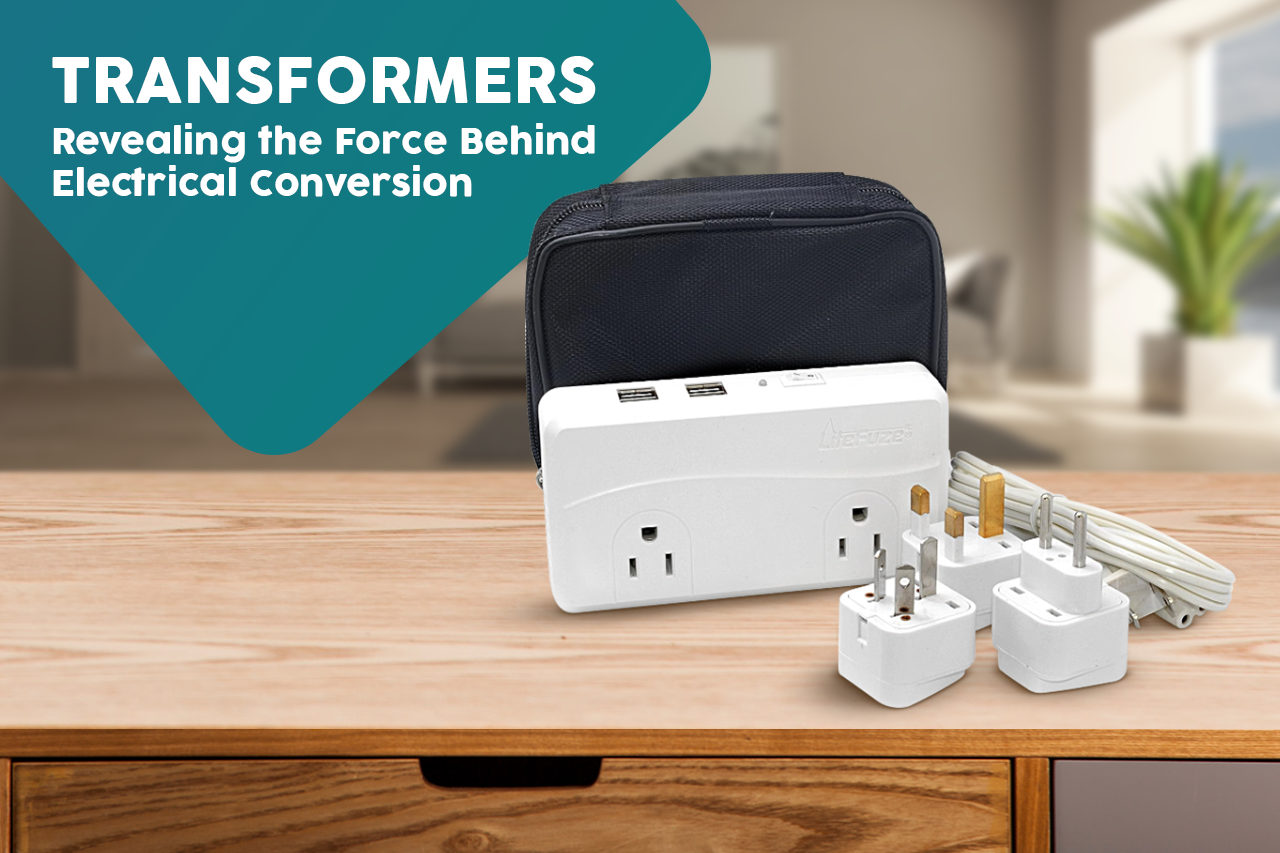Have you ever wondered how different devices of varying wattages can operate flawlessly without any hiccups at the same time? How can a single outlet effectively manage the power requirements of several appliances? This incredible capability is attributed to electrical transformers, often referred to as the "shapeshifters" of the electrical world. Well, voltage transformers are essential to the seamless transmission and distribution of electricity, which is the fuel that powers every aspect of our modern way of life. These remarkable electrical converters, which are frequently concealed from view, have the power to regulate different voltage levels, which makes them a crucial part of our electrical infrastructure. This blog delves into the intricate nature of voltage converters, illuminating their importance, functioning, types, and uses.
What is a transformer?

A voltage transformer is fundamentally an electromagnetic device that uses electromagnetic induction to move electrical energy between circuits. Its main job is to regulate voltage levels while keeping the frequency at which they occur constant, either stepping them up (increasing) or down (decreasing). Since high voltage needs to be maintained to minimize energy losses during transmission, the ability to vary voltage is crucial for effectively delivering electricity over long distances.
How do transformers work?
The primary coil (also known as the primary winding) and the secondary coil (also known as the secondary winding) are the two main parts of a transformer. Typically, these two coils are twisted around a ferromagnetic core. The power supply is connected to the primary coil, and the load or device that requires the altered voltage is connected to the secondary coil. Alternating current (AC), electric current that frequently reverses, going through the primary coil creates a magnetic flux that produces a voltage in the secondary coil, paving the way for the transfer of energy.
Electromagnetic Induction is the underlying principle behind the operation of transformers. It is a phenomenon that Michael Faraday first observed in the early 19th century. In this, a magnetic field that surrounds the primary coil is created when alternating current passes through it. As a result, the secondary coil experiences a voltage due to electromagnetic induction in accordance with Faraday's law. The voltage transformation ratio is determined by the number of turns in the primary and secondary coils.
Types of Transformers:
Transformers come in a variety of designs, each geared towards a distinct purpose. The two most typical groups are step-up and down transformers.
- Step-Up Transformers: With the step-up converter, the voltage between the primary and secondary coils is increased. They are essential for the transmission of electricity because high voltage reduces energy loss during long-distance travel.
- Step-down transformers: Transformers that reduce voltage from the primary coil to the secondary coil are known as step-down converters. They are used in electrical distribution networks to provide homes and businesses with safe and useful voltage levels.
Scope of transformers:
- Power transmission and distribution: Transformers, the essential component of power networks, enable the effective flow of electricity from power plants to end users. Step-down converters lower voltage for safer distribution, and step-up converters increase voltage for long-distance transmission.
- Industrial use:Industries frequently need particular voltage levels for their gear and equipment. Transformers guarantee that the required voltage is supplied, facilitating smooth operations.
- Residential use:Compared to those in power lines, household appliances and gadgets operate at lower voltage levels. Step-down transformers provide safe and practical voltage for use in residential appliances.
- Integration of renewable sources: Transformers assist in integrating renewable energy sources such as solar cells and wind turbines into the grid by helping to match the generated voltage with the system's requirements.
The advantages and challenges of transformers:

The benefits of transformers are quite obvious. They aid in reliable voltage conversion, effective energy transmission, fault management, power quality improvement, managing load variations, and versatile applications. But there are also problems with transformers, like energy losses from heat dissipation, upkeep costs, and the possibility of electromagnetic interference.
Acknowledging the evolution of technology:
Transformers continue to get stronger with the advent of technology. Real-time data collection and effective administration of power distribution networks are made possible by smart transformers that come with cutting-edge monitoring and control systems. These developments open the door for electrical systems that are more adaptable and resilient.
Conclusion:
Transformers are the backbone of our electrical world. They strive to empower the electric future. The efficient and secure transmission, distribution, and use of electricity are only made possible by their capacity to change voltage levels. They are essential to modern life, powering everything from cities to our phones. They will surely continue to be a key component in creating a sustainable and electrified future as we continue to research revolutionary technologies.



